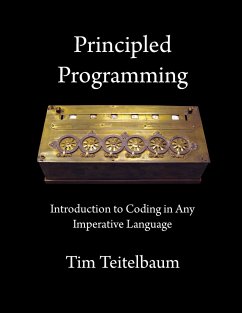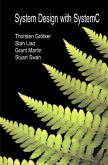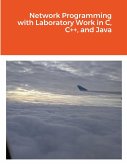This book is an introduction to computer programming aimed at the level of a first college course. It is also suitable as a monograph for people beyond the introductory level who are unfamiliar with its methodological content. A typical introductory programming textbook begins with the notions of algorithm, program, computer, program execution, memory, input, and output. The rest of the book presents a programming language. Each language feature is defined by its syntax, i.e., how to punctuate it, and its semantics, i.e., what the feature does during program execution. Small programs or program snippets illustrate each feature and its utility. Because modern programming languages are large, such books are also large. These books are intimidating in their length, but not in their depth. Where in such language-oriented books are students explicitly instructed in how to program? Guidance and suggestions may be scattered throughout the text, but are usually subordinate to the main chapter structure, which is based on language constructs. Illustrative examples are critical, but are usually presented as completed programs. The text typically explains how code works, but not how it was derived. Programming, the dynamic and synthetic activity of creating a program, often gets short shrift, as if you are supposed to learn how to do it by osmosis while staring at code samples. You can know a programming language thoroughly, but still not know how to program. Confronted with a programming problem, you may have no idea where to begin. Or worse, you may head off in the wrong direction, and soon find yourself mired in a morass from which the best path forward may be to back up and start all over again. In contrast, this book is a methodology-oriented introduction to computer programming. Its subject is programming principles, not language features. To keep focus and avoid distraction, it is limited to a minimal programming language, one so small that it can be said to be universal. Programming skill is measured by the ease with which you can turn a problem statement into a working program, not by the number of language features you know. The methodology presented is not specific to a particular language; rather, it applies to programming, in general. The notation used is essentially a small subset of Java, but the book is about programming, not programming in Java. An appendix provides mappings from this core subset of Java to equivalents in Python, C/C++, and JavaScript. The approach is distinctive in that it presents content to beginners that is often considered advanced, e.g., program state-spaces, specifications written in terms of preconditions and postconditions, loop invariants, data-structure invariants, loop variants, and programming by stepwise refinement. But the book retains an introductory character --- by avoiding formalism, offering intuitive analogies, and providing elementary explanations. The book's focus is synthesis, not analysis. Thus, no substantial algorithm or application is presented as a fait accompli for interpretation. Rather, the essential content of the book is the stepwise development of solutions rather than the solutions per se. Language-oriented introductions to programming tend toward being encyclopedic tomes; in contrast, this is a comparatively short, coherent, and digestible book that aspires to tell a compelling story, knitted together by interesting, nontrivial examples that are woven throughout --- a book that invites cover-to-cover reading.








